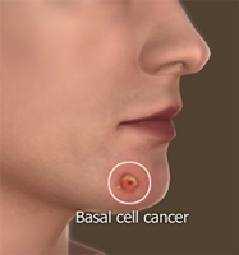Skin Cancer and Flap Surgery for Face and Neck
Skin Cancer

Exposure to the harmful radiation of the sun causes damage to the genetic material of the skin cells. These altered skin cells divide uncontrollably to form a tumour mass. These appear as new growth or sore that does not heal. The cancer of the basal cells is called basal cell cancer and that of keratinocytes is called squamous cell cancer. The cancer of the melanocytes is called melanoma. The basal cell cancer and squamous cell cancer together are categorised as non-melanoma skin cancers.
Basal cell carcinoma – Basal cell carcinoma is the most common form of skin cancer. About 80% of skin cancer cases are found to be basal cell carcinoma. It can look like a small pearly nodule or pinkish patch on the skin. It can also appear as a sore that seems to heal but returns repeatedly or as yellowish waxy scar. It develops as a result of short-term exposure to harmful UV rays such as during vacations and on the sun-exposed areas such as the face, ears, scalp, neck and trunk. These cancers grow slowly and rarely spread to other parts of the body.
Squamous cell carcinoma – About 20% of skin cancers are squamous cell carcinoma. Squamous cell carcinoma develops most commonly in middle-aged and elderly people with fair complexion and long-term exposure to sun rays. It appears as a crusted or scaly area over your skin. It is most commonly seen on sun-exposed areas of the body.
Melanoma – Melanoma mostly develops from the mole. Melanomas are malignant and can spread to other parts of the body if not treated early. Any change in the size, colour, shape and feel of the existing mole or appearance of a new mole should be reported and checked by the skin cancer surgical practitioner/specialist.
There are other rare type of skin cancers such as merkel cell carcinoma, Kaposi’s sarcoma and T cell lymphoma of the skin that account for only 1% of the total skin cancers.
Treatment
The main primary mode of treatment for any skin cancer is removal of the cancerous lesion. For skin cancers that can spread to other parts of the body removal of the cancerous lesion is followed by radiation or chemotherapy. The type of surgery used to remove the skin cancer depends on the type of skin cancer, its size and its location. The skin cancers are always removed along with an additional adjoining normal tissue border to make sure about the complete removal of the cancer cells.
The non-melanoma skin cancers usually do not spread to other parts of the body. Small skin cancer of the face and neck can be removed by excision done under local anaesthesia and excision is closed with stitches. If the tumour is large, wider and deeper tissue is removed from the face and neck. This will lead to big and ugly scars on the face and neck. These areas of the face and neck can be reconstructed by a skin graft or skin flap by a specialist surgical practitioner.
Skin graft – Skin graft is a thin piece of skin taken from another less obvious part of the body such as inner thigh or even behind the ear or neck to match the colour. The skin graft is then put over the place which needs to be reconstructed. Dressing is done to press the graft to the underlying layer for its blood supply. Care should be taken while the graft attaches to the underlying layer and the area heals. To prevent infection antibiotics are prescribed. The new skin at the donor site grows within few weeks. Initially the graft looks of a different colour as the face or neck but slowly its colour fades and matches with that of its surrounding.
Skin flap – Skin flap is a thick flap of skin with the underlying subcutaneous layer supplied with blood vessels and nerves. It is used for the reconstruction of large and deep wounds. The flap is taken from the adjoining area and is still attached to the donor site from one side as in a flap to maintain the blood supply to it. It is then stitched on the wound. Even the donor site is also closed with stitches. Reconstruction involving flap is little complicated as compared to a skin graft and requires a longer stay in the hospital but gives better results.
